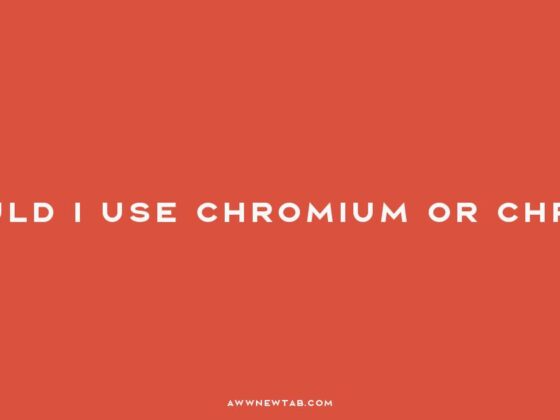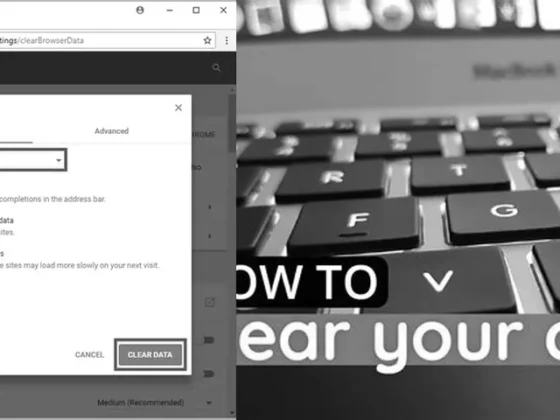How Can I Effectively Manage My Chrome Extensions? A Comprehensive Guide: Are you tired of your Chrome browser feeling cluttered and disorganized? Do you find yourself struggling to manage the ever-growing list of extensions? Well, fear not! In this blog post, we will delve into the world of Chrome extensions and discover the secrets to managing them effectively. Whether you’re a Chrome enthusiast or a casual user, understanding how to navigate and organize your extensions is essential for a seamless browsing experience. So, grab your virtual toolbox and let’s dive into the wonderful world of Chrome extension management!
Understanding Chrome Extensions
Google Chrome is a powerhouse when it comes to browser functionality, largely due to its extensive library of extensions. These small software programs enable users to tailor their browsing experience to their needs and preferences. Whether it’s productivity, security, or entertainment, there’s an extension for almost every purpose.
Accessing Your Chrome Extensions
To begin managing your Chrome extensions, you must first access them. This is a straightforward process that starts with opening Google Chrome on your computer. Click on the three-dot icon in the top right corner, which opens the Customize and Control menu. From this menu, select “More Tools” and then navigate to “Extensions.” This will lead you to the Extensions page, where you can oversee all your installed extensions.
Managing Installed Extensions
Now that you’ve reached the Extensions page, each extension you’ve installed will have its own box or card. This area is where you can manage the functionality of each extension.
Enable or Disable Extensions
To temporarily disable an extension without removing it from Chrome, you can toggle the switch in the lower right corner of the extension card. Disabling an extension is helpful for troubleshooting issues or improving browser performance without completely discarding the extension.
Remove Unwanted Extensions
If you find an extension that you no longer need or one that might be causing problems, it’s simple to remove it. Just click on the “Remove” button next to the extension in question. A dialog box will appear asking you to confirm the removal. Once you do, the extension will be uninstalled from Chrome.
Access Extension Settings and Details
Each extension card also has a “Details” button. Clicking on this will bring you to a page with more information about the extension, including permissions it has and the ability to set it to work in incognito mode, if supported.
Understanding Chrome’s Extension Management System
The extensions you install are not just managed through the Chrome interface; they are also organized within your computer’s file system.
Chrome Extension System Files
The settings for Chrome extensions are stored in a specific location on your computer. For Windows users, you can find this at C:\Users\[login_name]\AppData\Local\Google\Chrome\User Data\Default\Extensions. Here, each extension has its own folder named after its unique ID. This can be useful for advanced management or troubleshooting.
Inspecting Extension IDs and System Resources
For a more in-depth look at your extensions and how they interact with your system, you can visit chrome://system in your browser. Here, you’ll find a wealth of information about Chrome’s internal processes. By expanding the “extensions” row, you can see all your extensions listed by their IDs, along with resource usage and other details.
Cleaning Up and Organizing Extensions
Over time, you may accumulate extensions that you no longer use. It’s a good practice to regularly audit your extensions for ones that are outdated, unnecessary, or unused. Not only does this tidy up your browser, but it can also improve performance and security.
Security Considerations for Extensions
Extensions can be a gateway for security vulnerabilities. Be vigilant about the extensions you install and regularly check the permissions they require. If an extension asks for more permissions than it needs to function, it might be wise to reconsider its use.
Performance Impact of Extensions
Extensions can also impact the performance of your browser. Too many, or poorly coded extensions, can slow down your browsing experience or cause Chrome to consume more system resources than necessary.
Organizing Extensions for Better Workflow
For those who rely heavily on extensions for productivity, consider organizing them in a way that complements your workflow. You can group similar extensions together or keep your most-used extensions active while disabling others that are used less frequently.
Advanced Extension Management
For users who are more technically inclined, there are additional ways to manage extensions beyond the Chrome interface.
Extension Developer Mode
Turning on Developer Mode for extensions allows you to load unpacked extensions, update extensions manually, and view more detailed error reports. This can be useful for developers or advanced users who want to test extensions before they are published to the Chrome Web Store.
Using Third-Party Extension Managers
There are also third-party extension managers available that offer more features than Chrome’s built-in manager. These can provide better organization, bulk management, and additional insights into your extensions.
Best Practices for Managing Chrome Extensions
- Regularly Review Installed Extensions: Keep an eye on what’s installed and remove anything that’s not in use.
- Pay Attention to Permissions: Install extensions from trusted developers and be cautious of the permissions they request.
- Keep Extensions Updated: Updates often include security patches and performance improvements.
- Back Up Important Information: Some extensions may store data that you don’t want to lose. Make sure you back up this data regularly.
- Use Developer Mode Wisely: Only enable Developer Mode if you understand the potential risks and have a specific need for it.
Conclusion
Chrome extensions are a fantastic tool for enhancing your browsing experience, but like any tool, they require management. By following the steps and best practices outlined above, you can ensure that your extensions are well-organized, up-to-date, and secure. Remember that less is often more when it comes to extensions—keep only what you need, and your Chrome browser will thank you for it.
Managing your Chrome extensions doesn’t have to be a chore. With regular check-ins and a bit of organization, you can make sure that your browser is an efficient, secure, and powerful tool for all your internet needs.
FAQ & Related Questions about Managing Chrome Extensions
Q: How do I manage my Chrome extensions?
A: To manage your Chrome extensions, open Chrome on your computer, click on the three-dot icon at the top right corner to open the Customize and Control menu, and select “More Tools” followed by “Extensions.” From there, you can manage your available extensions.
Q: Why should I manage my Chrome extensions?
A: It is important to manage your Chrome extensions because unstable extensions can overwork your browser and cause your computer to slow down, malfunction, or overheat. Extensions can also consume core computer resources and pose security risks if poorly coded.
Q: How do I remove a Chrome extension?
A: To remove a Chrome extension, open Chrome on your computer, click on the three-dot icon at the top right corner, select “More Tools,” and then choose “Extensions.” On the extension you want to remove, click on the “Remove” button, and confirm the removal when prompted.
Q: How do I open the manage extensions page on my browser?
A: To open the manage extensions page on your browser, launch Google Chrome, click on the three-dot icon at the top right corner to open the Customize and Control menu, select “More Tools,” and then click on “Extensions.”
Q: How do I turn on developer mode for managing extensions?
A: To turn on developer mode for managing extensions, open the manage extensions page in Chrome by following the steps mentioned above. Then, at the top right corner of the page, toggle the switch to turn on Developer mode.


